Affiliate disclosure: This post may contain affiliate links. Please see our Privacy Policy.
Living off-grid doesn’t mean giving up modern conveniences. There are a number of companies that make specialized off-grid appliances, and while they cost a bit more at the start, they’re built to last a lifetime.
Our off-grid cabin has all the modern appliances, and while some are specialized for off-grid use, others are just efficient versions of standard household appliances.
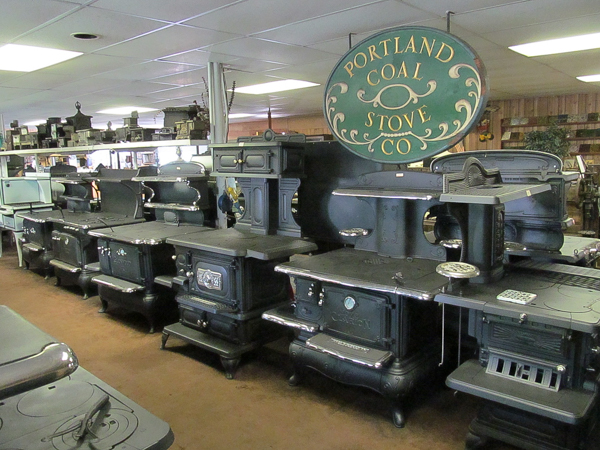
Off-Grid Stove
We don’t have an off-grid gas range, and that’s a huge mistake. You don’t really realize how much electricity a modern gas stove uses until you’re off-grid, and you want to bake in the winter time.
Modern gas ovens use special technology that is designed to keep them at a more constant temperature.
They do this by using an absurd amount of electricity in an igniter that continuously turns the stove on and off. Sure, the heat is generated by burning propane, but our “gas” range burns about as much electricity as a countertop plugin electric oven.
Growing up, we had one of those old pilot light gas stoves, and it worked just fine without any electricity. It kills me how much less efficient the new ones are, at least in terms of electricity.
Our kitchen was designed around an old-time wood/gas stove, but the previous owners took it with them when they moved out. We were disappointed, but it didn’t seem like a huge deal at the time.
That’s one of my biggest regrets about this house because it’s hard to find a wood/gas stove. Even if you can find one, it’s even harder to get someone willing to install it.
There is one place up in Maine that refurbishes them, called Bryant Stove and Music (the couple has since retired, and no one else took it on, so they’re permanently closed). We’ve made one visit out, and we’re hoping they get something suitable in stock soon so we can switch our stove out.
Shortly after our trip we called them, and they’re no longer dealing in wood/gas combo stoves simply because there’s no one willing to install them.
We’re now looking at options from Lehmans, which is an outfitter for off-grid households and Amish families. They sell both wood-fired stoves and kerosene stoves.
Ideally, we’d install a large wood-fired stove for winter heat and cooking, and a small kerosene stove nearby for quick summer cooking and coffee without heating the house. Kerosene burns clean, unlike butane and propane camp stoves.
It takes some time to learn how to use a wood cook stove, but they’re simple to use once you get the hang of it.
Off-Grid Refrigerator
Refrigerators are by far the most common off-grid appliance, so there are a lot of off-grid grid refrigerator options. There are propane refrigerators for fully off-grid camps and DC electric models that run directly from battery power without an inverter.
DC Electric Refrigerators
If you have any electricity generation capacity, go with a Direct Current (DC) electric fridge. They use almost no electricity since they’re super-insulated and they can run directly from your batteries even if the inverter is down.
We run a Sunfrost RF16, and it’s basically a standard-sized refrigerator/freezer. They’re a bit more expensive than a standard AC refrigerator, but they’re built to last a lifetime.
A while back we were having an issue with ours, so we called the manufacturer for help finding a service tech. He laughed and said we don’t need a service tech, they’re extremely simple machines. He was able to talk me through the issue over the phone in about 5 minutes.
Ours has been running strong for more than 30 years now.
According to sunfrost, “one 100 amp hr 12V deep cycle battery will typically run the Sun Frost RF12 (a bit smaller than ours) for 3 days without recharging.” That’s a pretty small system, and still, it keeps it running.
They also say that 4 hours of sun on one 135 watt panel will keep the fridge running without issue. The only place where that becomes a problem is in far northern states in the winter time.
Living up here in Vermont there’s been plenty of times when we’ve shut the inverter and everything else down, and just let the fridge/freezers run on DC power for days on end. I’m very glad that we have that option instead of a standard AC refrigerator.
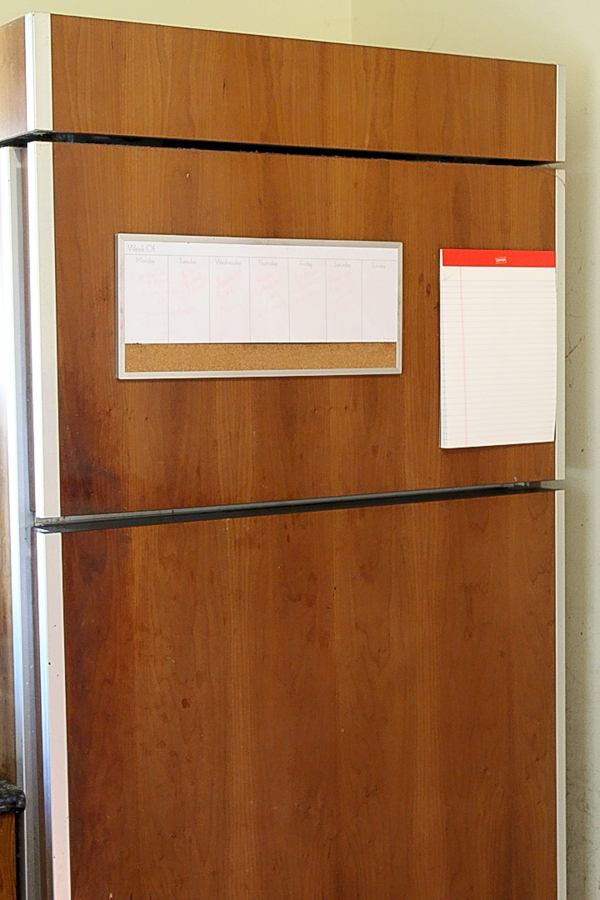
Propane Refrigerators
If you’re completely off-grid, with no way to generate electricity there are propane refrigerators. They’re not the best way to do it if you have other options.
That said, they do work well for remote cabins with no electricity generation capacity. Lehman’s sells gas-powered refrigerators and freezers if you find that’s the best option for you.
Propane refrigerators are much less efficient, and they use relatively expensive fossil fuels instead of free solar power.
Here’s a comparison of their efficiency: “A 10 cubic foot propane refrigerator will typically consume 1.5 lbs, or .375 gallons, of propane per day. The energy content of 1.5 lbs of propane is 32,250 Btu or about 9485 watt-hours. The Sun Frost RF12 consumes only 24 amps hours a day, which is equivalent to 288-watt-hours a day. That is an astounding 32 times less.” (Source)
With a propane refrigerator, you’re essentially burning something hot to keep something cool…and a lot is lost in the conversion there.
Off-Grid Freezer
We run two DC electric freezers, and a third large AC freezer in the summertime when the garden crops are coming in.
The DC freezers are hard-wired into our basement, where it stays cool year-round. Both of our DC freezers are 8 cubic foot models made by Sun Danzer.
Our AC freezer is a large 14 cubic foot model, and we use it to store produce and meat harvested on our homestead in the summer months. Once the busy summer season is over, we work through all the food and preserve it in other ways, largely by canning.
The AC freezer can then be off for the winter months when electricity is more scarce.
Off-Grid Dishwasher
Before moving off-grid, I’d never had a dishwasher. Now we can pack it and let the sun do our dishes for us while we’re out in the garden.
Our dishwasher isn’t anything special. It’s just an energy-efficient KitchenAid model from more than a decade ago (model #kuds02frbl1).
Believe it or not, running a dishwasher off-grid actually makes a lot of sense. Doing dishes uses up power for a well-pump unless you’re lucky enough to have a gravity well.
By packing the dishwasher in the evening, and then waiting until mid-day the next day to run it, you’re delaying use of electricity to match the supply.
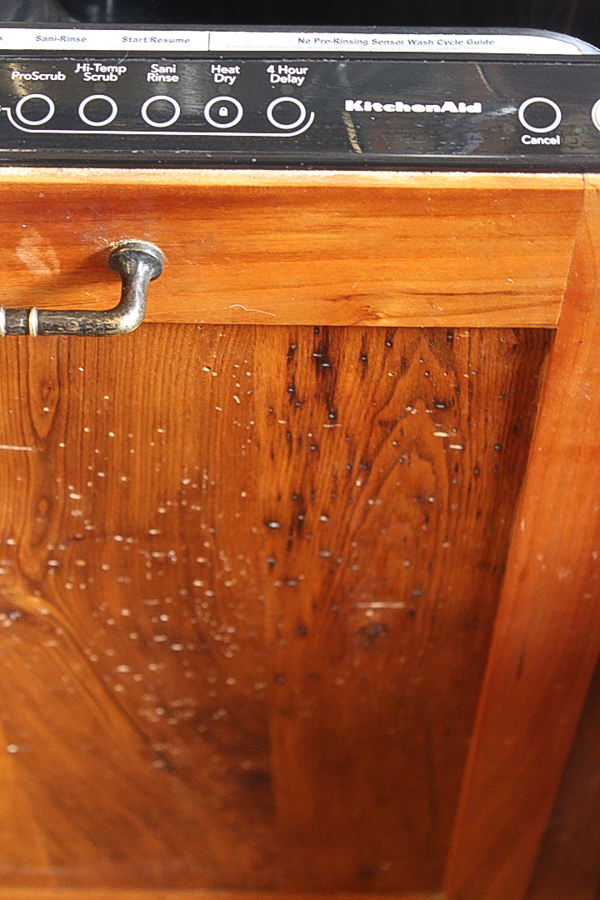
Without a dishwasher, I’d be inside doing dishes on sunny days, rather than out in the garden, and I’ll honestly say it’s by far my favorite way to use our free electricity. In the summer, a dishwasher running midday doesn’t even dent our solar production.
In the wintertime, you can either skip using the dishwasher, or wait for the sun to run it, or just turn it on when you kick on the generator.
Off-Grid Washing Machine
Our electrical system is pretty robust, and we’re able to run a standard washing machine without issue. We have to time our loads to peak generation, but I’m happy with that solution.
Some modern washing machines have an electric water heater built into them, that pre-heats the well water to ensure that the water is at just the right temperature going in.
That’s not a good idea off the grid, as any type of electrical heat takes a lot of juice. There are plenty of models without it though.
If you’re looking for a more “off-grid” solution than a standard washing machine, we also have a small pedal powered washing machine that we use as a backup and when electricity is scarce.
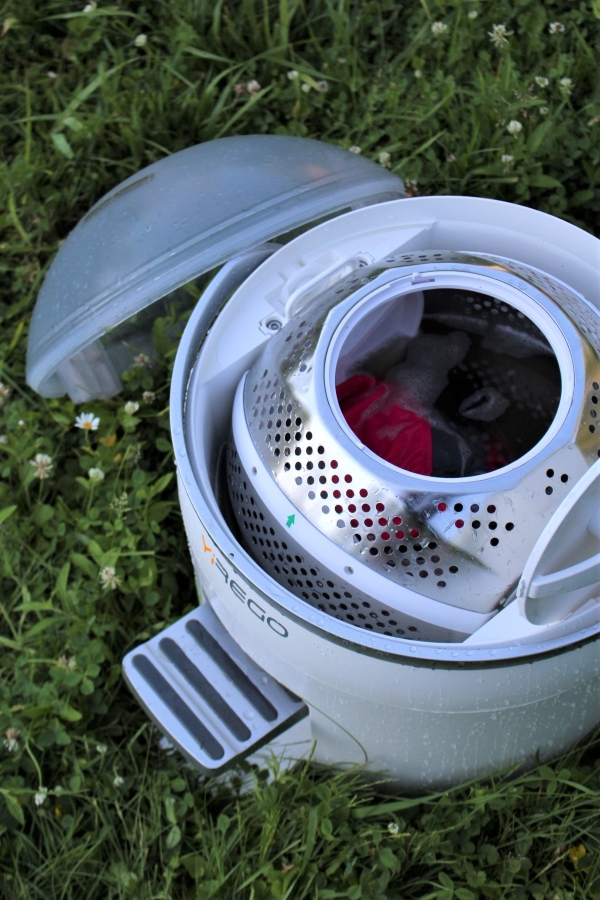
A friend of ours lives in a yurt near us in Vermont and had been very happy with hers for years and she turned us on to them.
There are also a couple of different crank-operated washing machines with great reviews, like this one and this one.
The main benefit of the pedal powered machine is that it both washes and spins out the clothes. Crank operated types don’t spin out the clothes, so you’ll also need a clothes ringer, and those things are incredibly expensive (though built to last generations).
If you go that route, I’d recommend a Calliger Clothes Ringer. They’re a real work horse and will last forever. We have one of those from before we invested in the pedal powered washer.
Off Grid Resources
Looking for more off grid resources to help you make the transition?
- 6 Things I Wish I’d Known Before We Moved Off Grid
- Financing Off Grid Property: Things to Know
- Our Off Grid Solar & Wind Setup Tour
- Maintaining Off Grid Systems in Winter
- 7 Tips for a More Dependable Off Gird System
- Finding Off Grid Homes For Sale
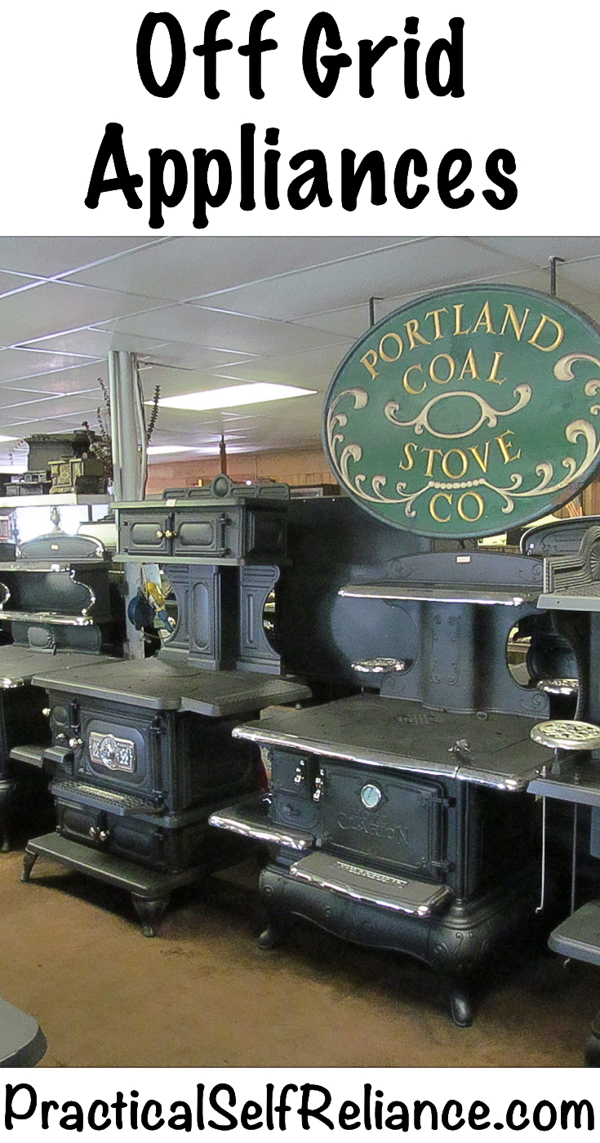
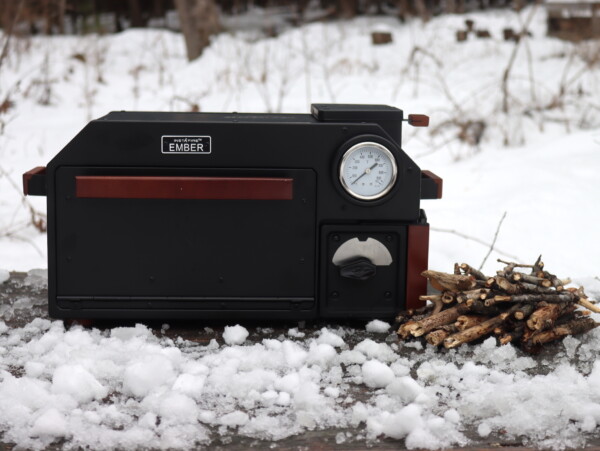
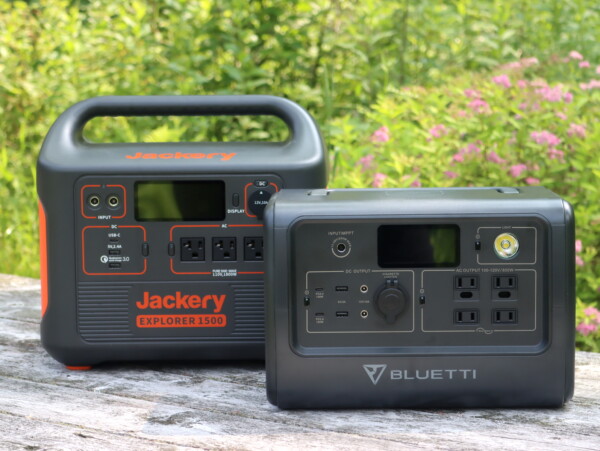
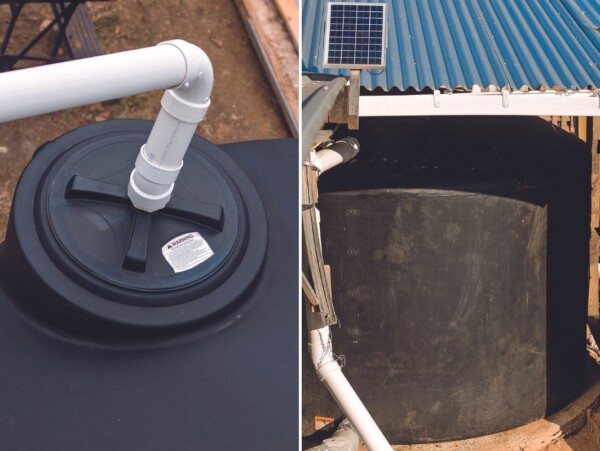
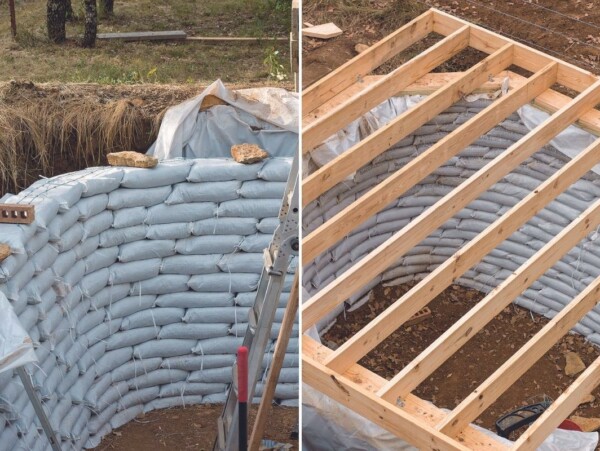










Any other fridge/freezer recommendations? According to the website, “Sun Frost is no longer manufacturing refrigerators” 🙁
We learned that recently as well, when a few parts broke on ours (door racks) and we tried to get new ones. They just went out of business recently, and I’ve yet to find anyone else making DC refrigerators unfortunately
Thank you so much for sharing such good information.
You’re quite welcome!
This post on off-grid appliances is incredibly helpful! I love the practical tips and product ideas you provided. It’s inspiring to see how self-reliance can be achievable with the right tools. Looking forward to trying out some of these suggestions in my own setup!
Ashley,
Beginning off-gridder in Northern Lower Michigan here!
Would you recommend a sundanzer brand refrigerator or is the suncrest the best way to go for longevity and service? I saw you use Sundanzer freezers so I was curious.
I’m starting from scratch and I’m starting the buying process…
Also, all the options for pedal or hand crank washers you posted are no longer available, is there an updated one you would recommend, either from you or a fellow off-gridder?
There’s so many to choose from it’s ludicrous.
I also have some questions about your battery storage:
1.) is this inside a building? I see it’s in an insulated box and I read in one article you wrote that they may freeze? I thought batteries couldn’t freeze bc of the water in them so if this is correct I would have to have them inside my house? It’s 20×20. No basement. Can they go in a crawl space?
2.) this may be a silly question but I’m asking it anyways! does this put off any type of frequency? I may have to have these things behind the wall where I sleep or under the floor where I sleep…
Lastly: any experience with heating water with a U-kit and wood stove/cooktop would be great. Or an article if others have requested one. I’m currently hauling in water but a sandpoint hand pump well inside the house is in my very near future! As is a composting toilet. I built a pit privy outhouse but in the winter I’m gonna say that’s pushing it even for me. Is there any info you can share on those? I see suncrest has one available.
Thanks for all the info you’ve already shared! I have always loved your site! Found you on Pinterest for ages ago!
Blessings to you and yours
Jenn
We just found out this year that the company that made our refrigerator went out of business. Too bad, we needed a part…and now can’t get it. Not a bad run really, the fridge is 30 years old and it was just a shelf that broke, the mechanics are still running strong. I’d recommend it if they still made it!
For batteries, ours are indoors in our basement. The exact operating temperatures depend on the model you choose, and some can operate at lower temperatures than others. For frequency from them, I couldn’t say. They do make some noise though, if you’re sensitive to that. You can hear the inverter as it kicks on and off, and lead acid batteries make a gurgling noise sometimes. I wouldn’t have them right under where I sleep, and if pressed for space, put them on the opposite end of the house from your bed or tack on a little shed on the outside that’s insulated to hold them (most don’t take up that much space).
For washing machines, I checked and the ones I recommended are still made at least…just out of stock everywhere, so maybe they’ll remedy that soon. I looked for other options and don’t see anything right off hand.
Ashley your wriitng is fantastic, and this article is hands down THE BEST and most helpful I’ve read yet. Really appreciate the practical advice on what works and what doesn’t, power usages and context for those of us just trying to get our heads around off-grid living. Muchas gracias for your great work.
You’re very welcome. So glad it was helpful.
A couple of things, one of which has been covered by other posts: battery operated gas ranges. I recently replaced our gas stove with a Peerless ( https://www.premierrange.com/bfk100op.html) and love it. They actually also have one which plugs into the wall. These stoves have pilot lights (in the oven also) which are ignited by an electric spark. However, if the power goes out or the batteries die, you can turn them to the “pilot” position and light the pilot light with a match.
As far as sewing machines go, I picked up an old Singer 99 on Etsy, then converted it to a hand crank after refurbishing it (using “How to Refurbish Sewing Machines, A step-by-step guide for Singer models 66, 99, 15K & 201”). There are several hand cranks available, most made in China. However, you can also get the genuine Singer through an Internet search, or on Etsy.
We raised 4 kids in the 70s with a PAPA BEAR wood heater and a giant sized wood cookstove. When oldest got married she only knew woodstove cookery and the summer hot plate. The sewing machines are to be found here (N>C>) in the thrift stores catering to barn clearouts and such. Note the sewing machines (Singer) are mostly stainless steel & nickel. Even if they are froze up you can soak kerosene and work them into working. I get singer and parts are mostly interchangeable. The serial # has a singer website and will tell you exactly when it was made. Most of the cabinet can be rebuilt if there are old parts for clues. ( I have 4 singers and it is one for each grand daughter). Hope this helps-sally
That’s wonderful. Thanks so much for sharing.
How do you heat water? Hot water tanks use a lot of electricity
We actually have three water heating sources, believe it or not. We have an electric water heater that takes surplus electricity from our wind turbine and anytime it’s producing more electricity than our batteries can absorb (ie. the batteries are already full) the extra wind energy is dumped into hot water.
That same electric water heater also has a coil of radiant heat tubing running through the bottom of it, which takes heat from our Tarm External Wood Boiler and converts it to hot water. It’s just a simple loop off our heating system.
That electric tank is our pre-heat tank, and it goes through a mixing valve into our primary water heater, which is propane based. Most of the time, the water coming out of the preheat tank is 140 to 160 F…which way hotter than a water heater should get. The preheat works REALLY well.
The propane water heater is sitting there inactive most of the time. But, on occasion, if the boiler is off and it’s not windy at all, the propane will kick on to heat water for us. Either way, we always have hot water, and none of it comes from electricity from our batteries.
That’s awesome. We have one hot water tank hooked up to the diversion electricity from our water turbine. And then one hooked right up to a generator so we can heat it up quickly. We tend to use most of our power though and don’t produce much extra to heat water. So a lot of our hot water has to be heated on a stove. I would love to get a propane heater for more on demand hot water. Why do you preheat your water?
It is heated automatically through the excess wind energy and the boiler so that the propane only has to kick in occasionally when there isn’t hot water already coming from one of these sources.
Cool post. I for one hate dishwashers. We grew up without one. Unfortunately all kitchens are designed with a dishwasher in mind. I use mine to store everyday plates and cups because it was too expensive to remove it and find a matching cabinet.
I have a wringer washer that I had an amish guy install a 12 volt motor on. I run it off of my solar panels/batteries. Five panels, charge controller, eight deep cycle 12 volt golf cart batteries. The washer only runs for 15-20 minutes when it’s used. The small solar system provides power to a 20″ box fan in the house all day long, the laptop, the printer when it’s on, and a flat screen tv that runs 17 hours a day, as well as a 5,000 watt power invertor to run one mini freezer 5 cu. ft, and one AC/DC 8 cu. ft Freezer that is a Sundanzer. I burn wood during Winter, supplemented with a propane ventless 30,000 BTU heater. I use the wood burner to heat water for the gravity-fed shower. The shower uses a 12 volt 2.3 gpm pump to fill the overhead tank. Wish I hadn’t sold that full size propane fridge when I moved to Tennessee. I figured out how to keep it running without a propane tank. I need a 12 volt fridge.
I just fell in love with the article. I appreciate that you took a simple, understanding article explaining the process step by step and how to build momentum. Thanks once again.
Thank you. We’re so glad you enjoyed the article.